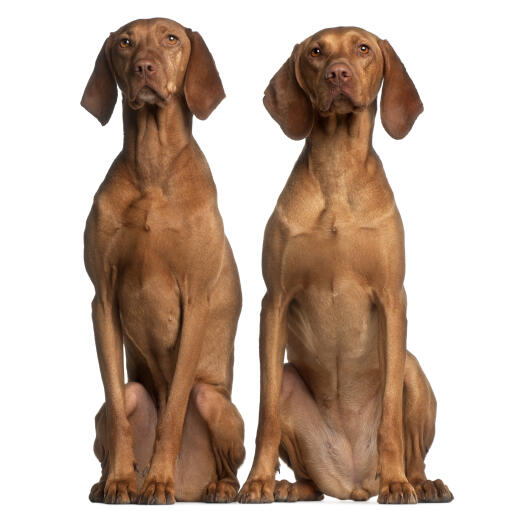Ungarischer Vorstehhund









Geschichte
The Vizsla originates from Hungary where is was bred as a hunting dog. It is excellent at tracking and pointing game for guns and also has retrieving capabilities. With it slightly smaller frame it covers undergrowth well, is fast and enjoys working closely to it's owner. It loves the water and will happily swim to retrieve game. After World War 2, the breed spread across the world and it soon became a popular pet and working dog. It is often called the Hungarian Vizsla or Hungarian Pointer.
Verhalten
The Vizsla was bred as a close working gun dog and it loves being around people. This is one of it's major advantages. It loves human company and doesn't do well left alone. They are a gentle breed, timid at times and affectionate to the extreme, they want to be close and will climb on to your lap given half a chance. It has earned the nick name 'Velcro dog' as it seems to be stuck to you. They make good pets and are good with children, strangers and other pets. It will be your shadow and will want to share your pillow (and get under the duvet). They are a very active breed and will gladly be out all day walking and running. They need more than a quick walk on a lead, they need to be free in a secure area, but training is important for recall as they can tend to wander in search of game. Vizslas can be overly sensitive and respond best to kind, affection-based training. Harsh words will scare a Vizsla, but they learn quickly and will want to please. Lots of physical affection works best with this breed. Some dogs can become over excited with visitors, so training is important to stop them jumping up to say hello. They are well suited to a very active family who spend a lot of time outdoors. They make a good jogging partner.
They take a long time to grow up and can act like a puppy until they are 3-4 years old. They have a short coats that needs regular brushing to get rid of dead hair. Vizslas are have a slight build but are muscular and lean. They need more exercise than most dogs to keep them mentally active and fit. They rarely suffer health problems, but epilepsy can be associated with the breed.
Charakter
Vizlas have a playful and affectionate temperament. Athletic dogs who love to run and play the Vizla can be a very excitable dog. They are also loving and affectionate and could even rival a Labrador on the ''who can be the friendliest'' competition. Unsurprisingly this means they are good with strangers and other pets particularly if they are socialised early.
Gesundheitliche Probleme
Health problems that may affect VIzlas include canine hip dysplasia (CHD), elbow dysplasi, epilepsy, cancer, progressive retinal atrophy (degeneration of the retina which can lead to blindness), eyelid problems, cataracts, glaucoma, bloat, allergies and blood clotting disease.
Einzelheiten zur Rasse
- Status: Common
- Lebenserwartung: 10 - 14 years
- Produktgewicht: 18 - 30 kg
- Höhe: 21 - 24"
- Selten: Nein
- Fell: Klein
- Pflegeanforderungen: Einmal pro Woche
- Stadt oder Land: Land
- Mindestanforderungen an Umgebung: Großes Haus
- Mindestanforderungen an Garten: Großer Garten
- Rassetyp: Jagdhund
- Version: Größe L
- Energieniveau: Hoch
- Benötigte Bewegung: Mehr als zwei Stunden













